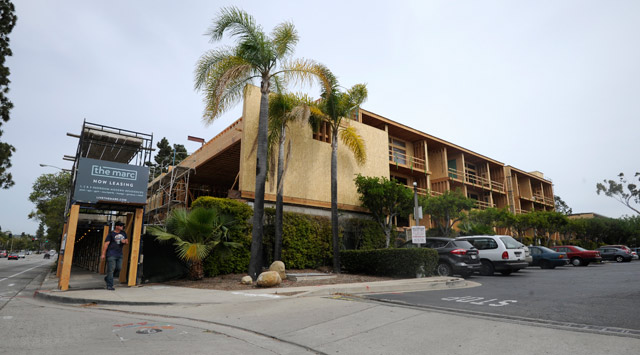Build, Baby, Build?
Santa Barbara's City Council Says 'Not Now' to Development Impact Fees

FALLING BEHIND: Santa Barbara has a planning pipeline jammed with an astounding 1,000 proposed apartment rental units, but unlike 85,000 other California cities, it’s reluctant to levy fees that would lighten the impact on current residents.
While some members of the City Council scoffed recently that an impact fee wouldn’t raise much, Councilmember Bendy White estimates that perhaps $10 million-$20 million could be raised over the next five or 10 years to help offset effects of the rental building surge.

When the council on August 9 decided to table the impact fee issue until spring, Councilmember Jason Dominguez protested that even if a yearlong rate study were approved in 2017, the city wouldn’t see the revenue until sometime in 2018, by which time another 1,000 units might be in the pipeline.
Under the trial AUD (average unit-size density) developer incentive program, the city will be jamming units into neighborhoods but without fees that would offset the higher-density burden on current residents, Dominguez argued.
When the AUD program was approved a few years ago, the intent was to stimulate creation of smaller, presumably more affordable units. But city officials say they were surprised at the resulting avalanche of applications. The city’s longtime average has been about 100 units a year.
Goleta and the county’s Goleta planning area and Carpinteria all have impact fees. Santa Barbara doesn’t. Fees help offset the effects of new development by contributing to parks, transportation, library, storm drainage, police/sheriff, and fire.
Carpinteria, for example, imposes about $22,000 per multifamily unit plus $10,000 an acre, the intent being to make new development help “pay its own way” rather than heap the burden on existing residents.
Santa Barbara’s AUD higher-density program offers major incentives to developers to build smaller units in higher-density projects, and it reduces parking and setback requirements. As a result, developers aware of the incentives, plus not having to pay impact fees, have zeroed in on Santa Barbara.
While White and Dominguez argued in favor of taking the first steps now, others on the council had little appetite for launching an impact study, at least now, despite the potential millions to be harvested.
As for the argument that a fee could be a disincentive for developers, White said a huge number of units are being constructed in Goleta despite that city’s impact fee.
He has also proposed a growth-management ordinance limiting AUD projects to 100 a year. Currently, in order to allow an evaluation, the AUD program would stop once 250 units have been granted certificates of occupancy. White says he is optimistic that both an impact fee and growth-management measure will be passed.
As for a staff study of a possible fee structure, several councilmembers pointed out that the staff already has “a lot on its plate.”
Councilmembers Frank Hotchkiss, Cathy Murillo, and Gregg Hart questioned the need for an impact fee, at least for now, and Mayor Helene Schneider said it wouldn’t be fair to impose one on projects already in the pipeline. The City Attorney’s Office said, however, that it might be possible up until a building permit is issued.
Murillo, a strong advocate for affordable housing, said the fee wouldn’t help “the housing crisis.”
Very few single-family homes are being built in city limits, but relatively affordable older units or homes on the Eastside and Westside are being replaced by apartments, Dominguez said. By not easing the infrastructure burden with a fee, he said, the city is putting the priorities of out-of-town developers and future residents above those of people who have lived here for many years on fixed incomes. It’s a case of the one percent getting richer, he charged. “None of this makes sense.”
The fee would only be applied to costs related to new development and wouldn’t affect the city’s multimillion-dollar backlog in deferred street needs and other infrastructure improvements.
So the can was kicked down the street, out of sight. But the problems remain. Countless more Santa Barbarans on the way, but no added money to improve parks, streets, or other facilities for them.
So prepare to squeeze.



